Summary
- Electric power
- Real batteries
- Water model
Quiz bonus Ch. 26
Chapter 27
- Emf & internal resistance

- Water model for circuits

- DC Circuits
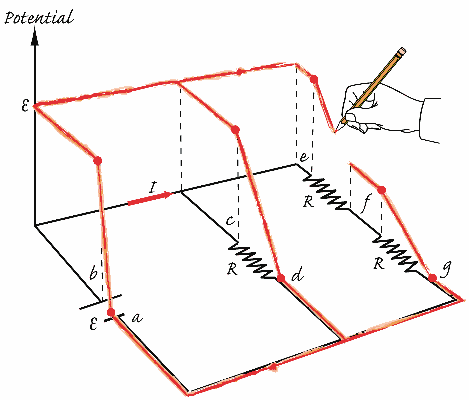
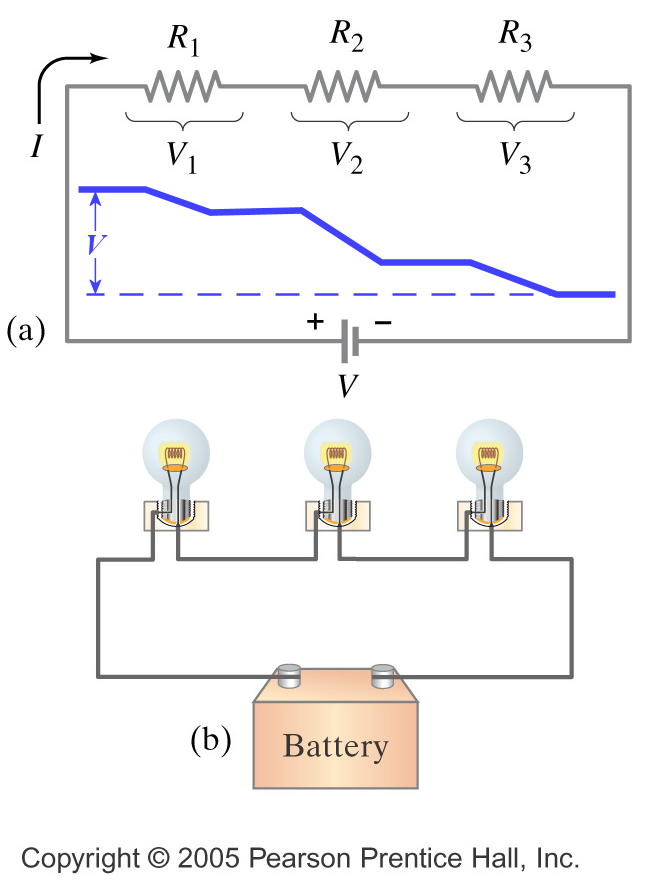
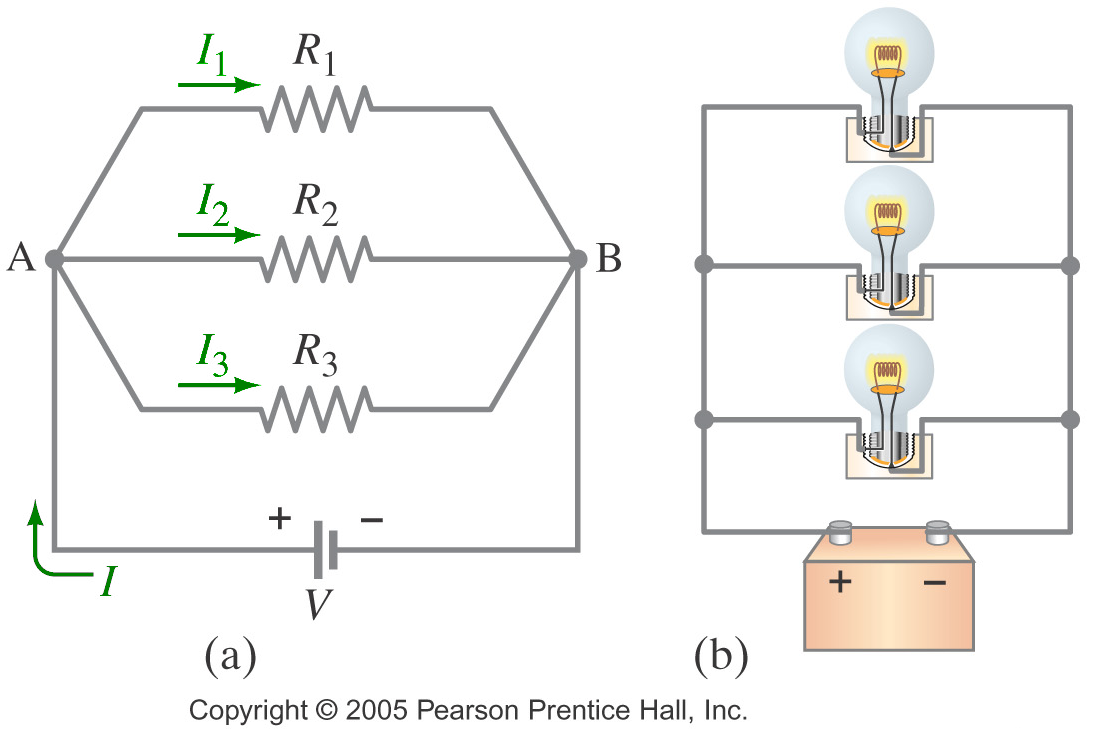
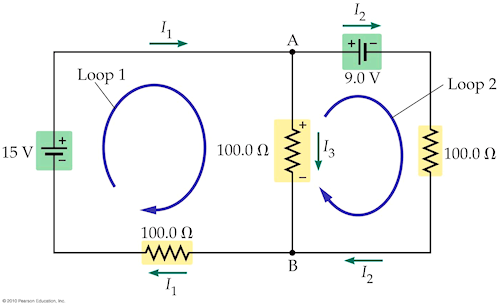

- Kirchhoff's rules
- Junction rule: Iin = Iout
(conservation of charge or current)
- Loop rule: ΔVloop = 0
(conservation of energy or voltage)
Example #4
- How circuits really work video (Veritasium)
- Practice:
Try these additional examples:
Example #5
Example #6
Example #7
(Challenging) Example #8
Example #9
Example #10
- Prepare:
Read textbook section 27-4 before the next lecture
PSE10 26.qq.02mod
A cylindrical wire has a radius r and length ℓ. If both r and ℓ are doubled, the resistance of the wire _____.
A. is cut to a fourth
B. is cut in half
C. remains the same
D. doubles
E. quadruples
Answer
POP5 21.33
A battery has an emf of 15.0 V. The terminal voltage of the battery is 11.6 V when it is delivering
20.0 W of power to an external load resistor. What is the internal resistance of the battery?
A. 1.97 Ω
B. 3.18 Ω
C. 5.76 Ω
D. 6.73 Ω
Answer
POP5 21.37
In the figure below, what is the current through the 7.00-Ω resistor if
ΔVab = 34.0 V?
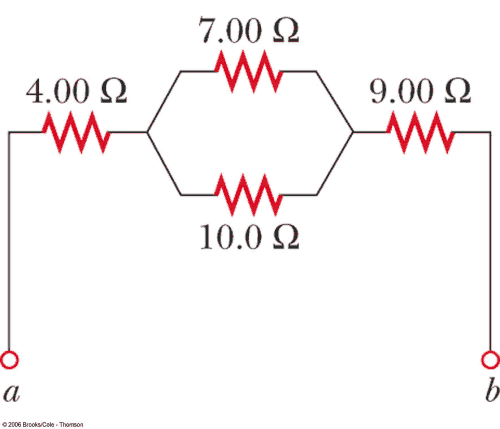
circuit animation
A. 0.835 A
B. 1.17 A
C. 1.74 A
D. 7.72 A
Answer
PSE6 28.16
Two resistors have Req = 690 Ω in series and 150 Ω in parallel.
What are their values?
A. 180 Ω, 510 Ω
B. 350 Ω, 340 Ω
C. 136 Ω, 554 Ω
D. 220 Ω, 470 Ω
Answer
POP5 21.45
If the ammeter reads 2.00 A, what is the unknown battery voltage ε in the figure?
circuit animation

A. 15.2 V
B. 12.6 V
C. 6.50 V
D. 3.33 V
Answer
gc6 18.8
A 9.0-V battery is connected to a bulb whose resistance is 1.6 Ω. How many electrons leave the battery per second?
A. 5.62 e/s
B. 337 e/s
C. 9.00×1019 e/s
D. 3.52×1019 e/s
Answer
Walker5e 21.37
A 9.00-V battery is connected across the terminals A and B for the group of resistors shown. What is the
potential difference across the 82-Ω resistor?

A. 6.31 V
B. 4.50 V
C. 8.20 V
D. 2.69 V
Answer
klm
Design a voltage divider that would provide one-fifth (0.20) of the battery voltage across R2.
What is the ratio R1 / R2? [Hint: Set the voltage drop across R2
equal to one-fifth of the battery voltage 0.20 × I(R1 + R2) and rearrange your
expression to find the ratio.]
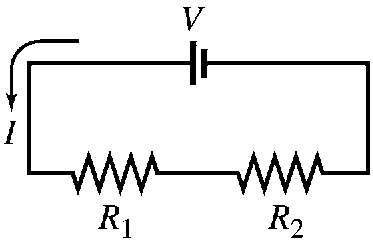
A. 5/4
B. 4/5
C. 5
D. 4
Answer
sj6 28.16
Two resistors have Reff = 690 Ω in series and 150 Ω
in parallel. What are their values?
A. 180 Ω, 320 Ω
B. 250 Ω, 250 Ω
C. 136 Ω, 722 Ω
D. 220 Ω, 470 Ω
Answer
Walker5e EYU 21.5
Which of the following is the correct statement of Kirchhoff's loop rule for loop 1?

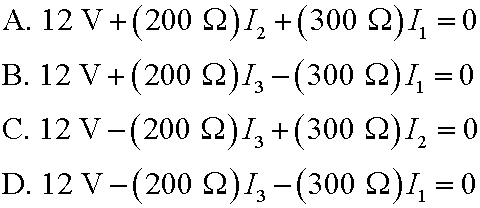
Answer
Walker5e 21.56c
If point A in the figure is grounded (V = 0), what is the electric potential at point D?
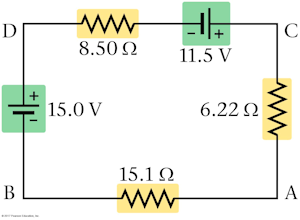 A. 0 V
A. 0 V
B. −13.42 V
C. +1.58 V
D. +5.53 V
Answer
B. is cut in half
Because R = ρℓ/A, doubling the length doubles the resistance, but doubling the radius makes the cross-sectional area four times larger, and cuts the resistance by a factor of four. Combining these two effects cuts the resistance in half.
A. 1.97 Ω
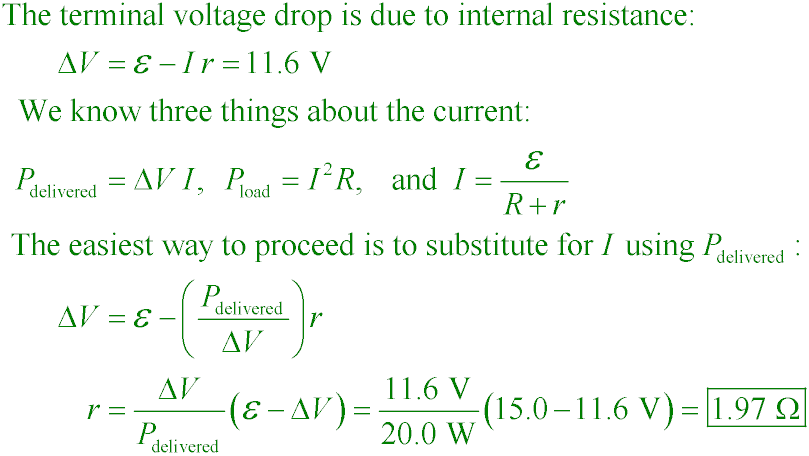
B. 1.17 A
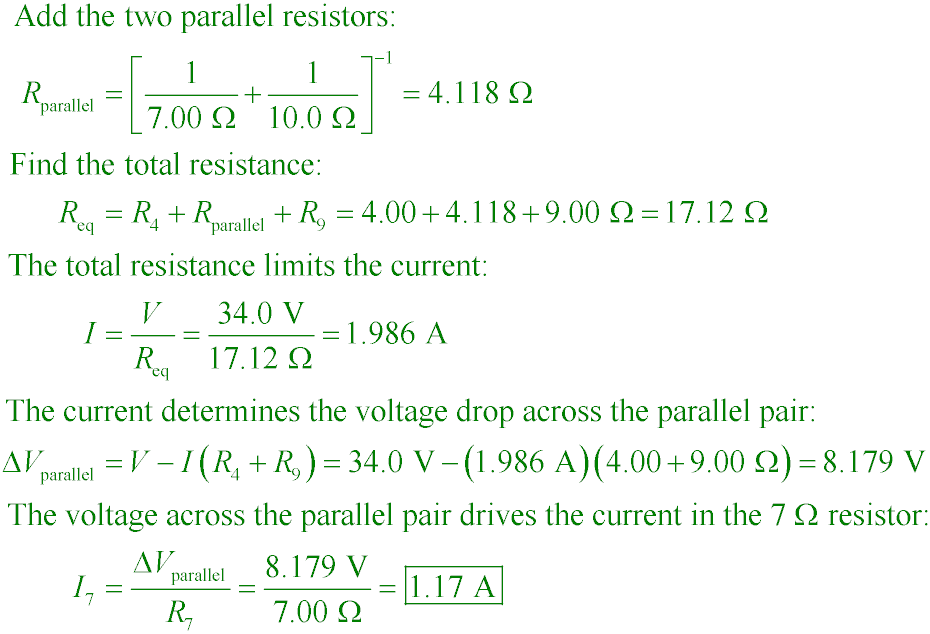
D. 220 Ω, 470 Ω
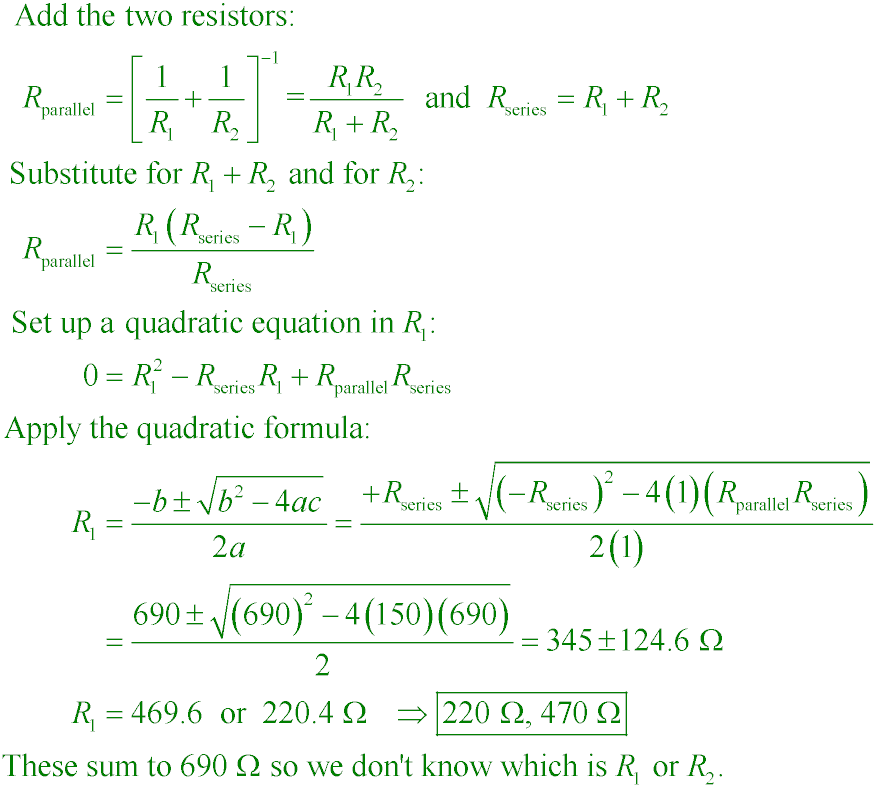
B. 12.6 V
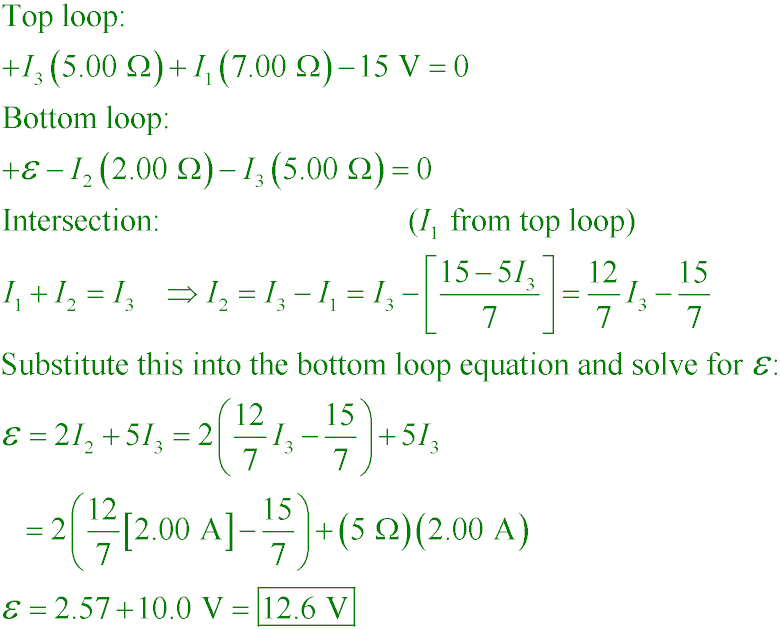
D. 3.52×1019 e/s


A. 6.31 V
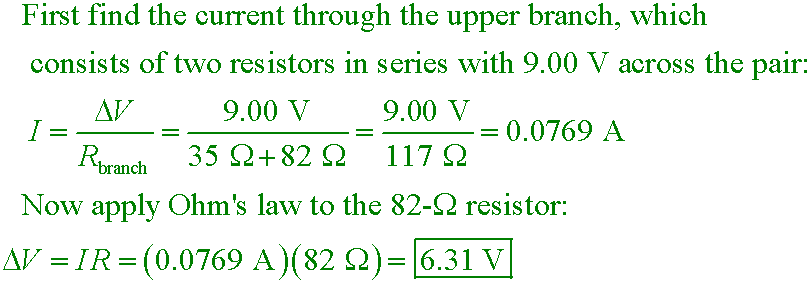
D. 4

Hence any arrangement where R1 is four times bigger than R2 will work. For instance, if V = 10 V, R1 = 40 Ω, and R2 = 10 Ω, then the current in the circuit will be (10 V)/(50 Ω) = 0.20 A, and the voltage drop across R2 will be IR = (0.20 A)(10 Ω) = 2.0 V, or one-fifth the battery voltage.
D. 220 Ω, 470 Ω
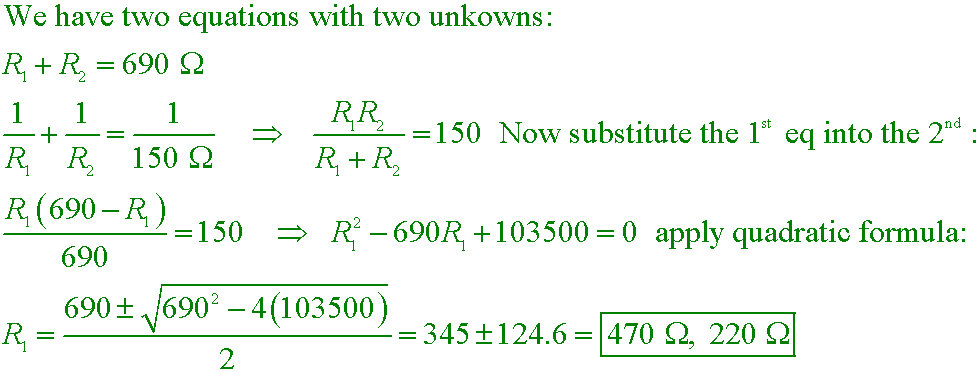


Starting in the lower left corner of loop 1 and going clockwise (as
indicated by the purple arrow), we go uphill through the battery, downhill with
I3 through the 200-Ω resistor, and downhill with
I1 through the 300-Ω resistor.

C. +1.58 V
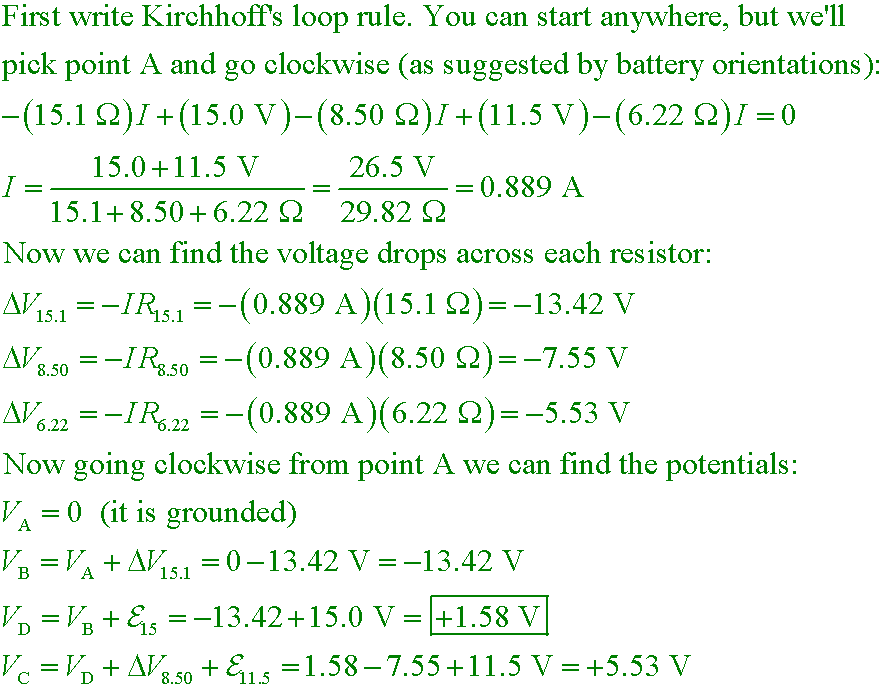













 A. 0 V
A. 0 V







